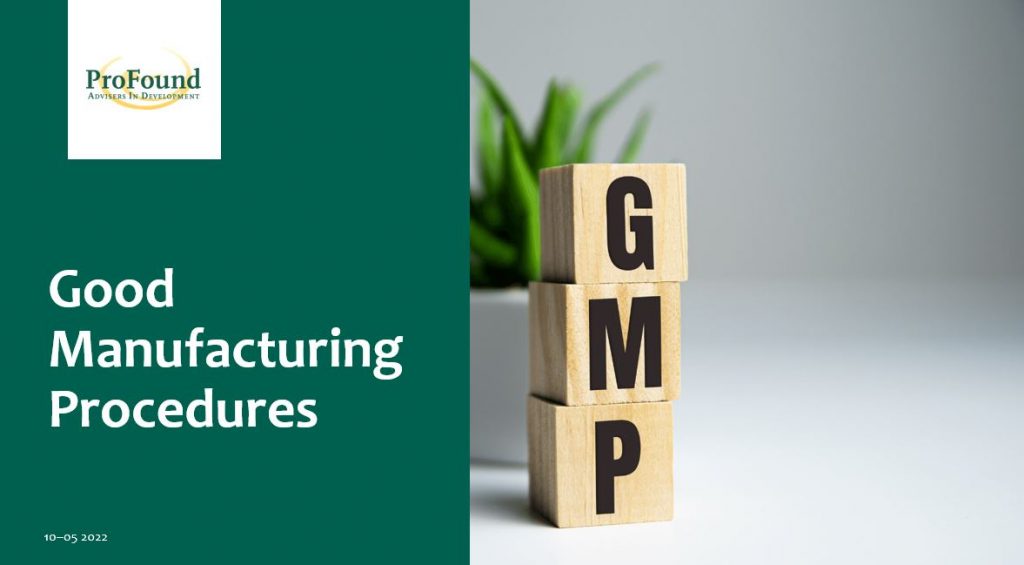Purpose
The purpose of cleaning and disinfection is to prevent chemical and microbial contamination of foodstuffs through contact with contaminated surfaces. The consequences of poor cleaning and disinfection can be:
- Lower quality of foodstuffs;
- Faster food spoilage;
- Increased risk of food poisoning.
Cleaning also aims to improve the working environment for the staff.
Cleaning and disinfection are two different concepts that are clearly related. Cleaningen is the removal of skin and part of the micro-organisms. Disinfection is the treatment of surfaces in such a way that the micro-organisms are killed or reduced to an acceptable level. Thorough cleaning must first be carried out in order for the subsequent disinfection to be meaningful.
Cleaning
Cleaning is the removal of dirt and part of the micro-organisms. Optimally performed cleaning can reduce the number of microorganisms on a surface by 50%-90%. This value may seem high, but from a microbiological point of view this is not the case. Disinfection is necessary to render the remaining micro-organisms harmless.
In general, the cleaning process consists of the following steps:
- Coarse cleaning (pre-rinse);
- Cleaning;
- Rinse (and dry if necessary).
Cleaning should in any case take place after the completion of a process and in some cases also in the meantime.
When cleaning you have to deal with:
- The criterion of cleanliness > counting of residual microorganisms.
- The nature and amount of the dirt > dirt is all unwanted substances that are on an object such as fats, proteins, carbohydrates or other contaminants that are sometimes difficult to remove by heating (polymerization of fats, denaturation of proteins, carbonization of carbohydrates). Particle size, viscosity, wetting effect, aw value, solubility and chemical reactivity of the dirt with the surface are also important.
- The nature of the surface (smoothness, hardness, porosity, accessibility, corrosion resistance, wettability, chemical reactivity) >the earth surface, together with the position of the surface (vertical/horizontal) largely determines the effectiveness of the cleaning.
- The duration of the cleaning;
- The temperature.
Removing dirt
Removing dirt from surfaces takes energy. There are three ways to break the dirt/surface bond:
- Mechanical: eg brushing or pumping;
- Chemical: eg acids, bases, polyphosphates, etc.;
- Physical: eg heat, lowering surface tension, ultrasonic vibrations.
Cleaning often consists of a combination of these methods.
Mechanical cleaning
Mechanical cleaning can be performed with:
- Brushes > is done by hand and is labor intensive. It is important to keep the brushes clean;
- Brushing machines > is also labor intensive;
- Steam (140°C) > a cleaning agent is often injected. Disadvantages are the formation of condensation, the coagulation and caking of proteins present and the dangers for personnel as a result of the high temperatures;
- High pressure using water (with detergent) occurs at a temperature of 70°C -90°C and a pressure of 200 atmospheres. Disadvantages are the spread of dirt, the risk of aerosols being formed and the disruption of walls due to the extremely high pressure. Can be used in pipes or in hard-to-reach places;
- Foam/gel > Using compressed air, foam (in which a cleaning agent is enclosed) is applied to surfaces. The preparation of the foam is the critical step. After the exposure time, the foam is rinsed off with water. Difficult to apply on smooth, steeply sloping surfaces;
- Cleaning in place (CIP) > is the circulation of cleaning solution in pipelines. If the circulation speed is too high, dirt can be forced into valves, rings and valves. Spraying installations are used for tanks;
- Dry cleaning > this is used where a humid environment is detrimental to the product (bakeries, dry soup preparation, chocolate industry).
Chemical cleaning
Chemical cleaning takes place with cleaning agents, the choice of agent depends on:
- Material of the object to be cleaned, in connection with corrosivity;
- Cleaning method to be followed;
- Cleaning power;
- Solubility in water;
- Biodegradability;
- Lime binding;
- Buffering ability;
- Washability.
Pollution
Depending on the nature of the pollution, use is made of:
- Alkaline cleaning agents (eg proteins and fats) > these agents consist of 60%-80% lye and are used for heavy pollution, especially grease and proteins, on rubber, stainless steel, plastics and glass. They work on the basis of saponification and hydrolysis. They are very aggressive and dangerous to the skin and eyes, and can attack paint, light metals, etc.
- Acidic cleaning agents (eg beer or milk stone and proteins) > these agents remove lime, protein and rust, and are mainly used to remove beer stone, milk stone or scale. For acid cleaning, nitric, phosphoric and sulfamic acids can be used. They damage skin and eyes and cause material corrosion.
- Neutral cleaning agents (eg hands or equipment cleaned by hand) > these agents mainly consist of solutions of surfactants in water. They are fairly soluble in both aqueous and non-aqueous systems. The effect consists of lowering the surface tension (see also Additions to cleaning agents), loosening dirt and keeping it floating in the solution. Skin tolerability depends on the product.
Physical cleaning
Forms of physical cleaning are temperature increase and reduction of the surface tension. Physical cleaning always takes place in combination with mechanical or chemical cleaning.
High-frequency sound waves (ultrasonic cleaning) are used in the precision mechanical industry. The advantage is the intensive effect, even in places that are difficult to access.
Disinfection
Disinfection is treating surfaces in such a way that all unwanted micro-organisms are killed or are reduced to an acceptable level. There are various disinfectants. These are classified according to their function.
| Bacteriostatic | has an inhibitory effect on bacteria; operation is reversible |
|---|---|
| Bactericide | kills bacteria (not the spores); the effect is irreversible |
| Fungicide | kills molds and yeasts |
| Virucide | kills viruses |
| Germicide | kills all microorganisms |
| Sporicide | kills all spores |
Not just any disinfectant may be used in the food industry. The following requirements are set for disinfectants for the food industry:
- Broad spectrum of action;
- Rapid and irreversible effect at concentration used;
- Little loss of effectiveness due to environmental influences (organic substances, pH changes);
- Stable (storage of concentrate, used solution);
- Harmless to humans during and after use (when used according to instructions);
- Not or little corrosive;
- No odor, taste and color deviations;
- Reducing surface tension;
- Little temperature influence;
- Active in low concentration;
- Fast operation;
- Biodegradable.
Disinfection can be done in different ways. Namely by immersion, spraying, steaming or disinfection in place (DIP). The use of a disinfectant causes a logarithmic death of the micro-organisms present. The same percentage of micro-organisms are always killed in a certain time unit. The death of micro-organisms depends on: the intrinsic efficacy of the disinfectant, the concentration used, the exposure time, the temperature, the pH, the presence of neutralizing substances and the nature and physiological state of the micro-organisms.
Groups of disinfectants
The following groups are distinguished
of disinfectants
- Strong acids
- Strong bases
- Chlorine, works against bacteria, bacteriophages, viruses, yeasts and to a lesser extent against spores and fungi. Oxidising, disrupts protein synthesis and enzyme systems. Inorganic chlorine compounds very sensitive to organic dirt, organic chlorine compounds less so. Strong odor, highly corrosive, may cause skin irritation. Scope of application is very wide, often as a solution. For example, sodium hypochlorite and bleaching powder.
- Iodine, works against bacteria, bacterial spores, yeasts, fungi and viruses. Works well at temperatures < 40°C, pH 3.5-4.5. Is corrosive and may cause color changes. Is used as a solution in alcohol for wound disinfection. Used as iodophors (surface-active organic iodine compounds) in the food industry: they are particularly effective against bacteria, viruses, yeasts and fungi and to a lesser extent against bacteriophages and spores.
- Aldehydes > work against bacteria, bacteriophages, yeasts, fungi and viruses and also against spores in the event of long contact time. Disruption of cell wall and enzyme system. They react with protein-rich dirt and are unstable in an alkaline environment. Toxic, aggressive, pungent odor. Are used for evaporating rooms. For example formalin (37% formaldehyde solution), glutaric dialdehyde and glyoxal.
- Alcohols > work against bacteria and some viruses and fungi, but not against spore-forming agents. Cause cell membrane breakdown. Leaves no residue, sensitive to protein-rich dirt, expensive. Limited use (laboratories, skin disinfectant). For example alcohol 70% (works better than 96%). Combination with other disinfectants possible, for example iodine and chlorhexidine.
- Quaternary ammonium compounds, quats > work against bacteria (especially Gram-positive), yeasts and viruses. Work to a limited extent against fungi and not against bacteriophages and spore formers. Gram-negative bacteria can develop resistance. Change cell wall permeability. Operate in a wide pH range. Inactivation by proteins and soap scum. Use for manual cleaning and disinfection, and on materials prone to corrosion. For example Baxillin, Sanosept and Cetavlon.
- Phenols and derivatives > work against bacteria, yeasts and moulds, not against spores and viruses, they disrupt the enzyme action of the cells. Best effect in an acidic environment at a concentration > 1%. Operation strongly influenced by organic matter. Due to pungent odor, toxicity and poor biodegradability, it is no longer used much, sometimes even for disinfection of floors (lysol). Also used in soaps and lotions (hexachlorophene, chlorhexidine).
- Amphoteric detergents > effective against bacteria, yeasts, fungi and a number of viruses, not against bacterial spores. Disrupt protein synthesis. In the presence of acids, these are cationic; in the presence of bases anion-active. For example, Tego 51.
- Hydrogen peroxide (H2*02) > oxidation, works against bacteria and to a lesser extent against bacteriophages, viruses, spore formers, yeasts and fungi. Gives no residues. Application for packaging in beverage industry, 25-50% H2*02 at 60-80°C.
- Peracetic acid > oxidation, works against bacteria, bacteriophages, bacterial spores, viruses, yeasts and to a lesser extent against fungi. Effective at low temperatures, can be combined with acidic cleaning agents or H2*02, no harmful residues, corrosive. Use for cold disinfection.
- Metals > usually toxic. Some zinc compounds are used to combat fungi.
Corrosion of metals can occur during cleaning and disinfection. Corrosion formation is influenced by the presence of chlorides, the pH value and the concentration and nature of corrosion inhibitors present.
Checking cleaning and disinfection
It is not only important to clean and disinfect properly, but also to check for this. The most effective control is the use of checklists in combination with testing for the presence of organic material. This testing can be done using rodac plates, dipslides, swabs and a rinse method. However, ATP measurements are increasingly being used to determine the effectiveness of the cleaning procedure.
Below is a comparison of three methods for checking cleaning and disinfection.
| Swabs | Rodac | ATP | |
|---|---|---|---|
| Time | 1-5 days | 1-5 days | few minutes |
| Sensitivity | > 10 cfu per ml | 1-100 cfu | > 10*4 mo per ml |
| Detection of | microorganisms | microorganisms | microorganisms with dirt |
cfu = colony-forming units, mo = micro-organisms
In addition to paying attention to microbiological risks, the food industry is also increasingly requesting control of chemical contamination by residues of cleaning agents and disinfectants. There are currently pH paper strips, chlorine strips and a method specifically aimed at the detection of quaternary ammonium compounds for this purpose. In addition to these risks, there is also the risk of the occurrence of foreign-product components from auxiliary materials used for cleaning, such as brush hairs. Apart from visual inspection, there is no practical and reliable control method for this.
With all control options, it is important to first pay attention to the surfaces that come into direct contact with the food to be prepared. Secondly, the object that can contribute to indirect contamination, such as doors and walls, must be considered.
Regular monitoring, either using ATP or microbiologically, will increase the understanding of the cleaning and disinfection process. As a result, the result can be improved through targeted adjustment. The ultimate measure of the total hygiene in the process is the microbiological quality of the end product.
Related articles to What is the purpose of cleaning and disinfection?
Many customers and visitors to this page 'What is the purpose of cleaning and disinfection?' also viewed the articles and manuals listed below:



